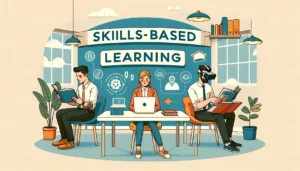A culture of change
- 4 Min Read
Lesley Swarbrick is HR Director at Time Inc. She explains how she has grappled with the storied history of publishing giant Time Inc, using Organisational Development to embed a culture of change and innovation. What was the impetus behind the change project you set up? I arrived in 2014 with a brand new chief executive. […]
- Author: Rachel Montgomery-Young
- Date published: Nov 22, 2017
- Categories

Lesley Swarbrick is HR Director at Time Inc. She explains how she has grappled with the storied history of publishing giant Time Inc, using Organisational Development to embed a culture of change and innovation.
What was the impetus behind the change project you set up?
I arrived in 2014 with a brand new chief executive. The context was that the world of publishing had been undergoing a period of seismic change, with consumer habits changing enormously thanks to technology. Faced with that, publishing companies have to stay ahead of the changes or risk failure.
So what we needed to do was to set about transforming the way in which the company worked. We did that in a business sense by prioritising key verticals, identifying growth areas and platforms such as video, events, e-commerce; and we acquired some new businesses and also looked at streamlining editorial processes. But in order to do that clearly, what we needed to do was have an over-arching focus on organisational development.
Why did follow an Organisational Development (OD) model?
OD is invaluable in situations like that, as it’s about promoting organisational health and effectiveness in the face of challenges like adapting to the increasing pace of change, dealing with very complex problems, integrating and aligning people resources and – really importantly for me – building sustainable capacity to achieve success. In other words, you are building that capacity and the capability so that if you disappear or new personnel come in, the whole thing doesn’t fall over; it lives and breathes on its own and is sustainable for the long term.
How important was it to use the right approaches to change?
It’s really important to adopt the right stance and adapt your approach to the circumstances you face. When I kicked this change process off at Time, I used appreciative inquiry. That is where you ask people a series of questions to get them to talk about what’s been good about the past. Research has shown that if you ask people what’s been bad, the energy levels tend to go through the floor.
But if you ask them what’s been good, straight away the energy goes up and people look at all the wonderful things that they have achieved and that have gone well. So you’ll ask them things like, ‘Who’s the best leader you’ve ever had?’ and from that you actually get much more constructive and positive data, because you find out what works and what people value. Whereas what they don’t value is data, true, and has some use, but it just makes people feel more energised and more positive to focus on what has worked.
And it’s important not to throw everything out. So for example if you’ve got a culture of ‘Let’s Talk’ and you’ve got the old performance management appraisal system with about 10 pages on it, you can why that might not be very fit for purpose.
But I had to consider whether you lose that altogether and do the latest modern HR fad, or do you recognise where the organisation is now, and say ‘Actually they need some kind of structure’; perhaps then you simplify it to a page and make it about conversations, what went well, what didn’t go so well, how can I help you? What support can I give?”
How did you overcome resistance?
I came up with this idea, which I think was quite key to really driving change. The key point was to explain to the organisation what we were doing, so we called it ‘Let’s Talk’. ‘Let’s Talk’ was the antithesis of the old culture which tended towards the hierarchical, with silos across the business. And ideas couldn’t come from the floor, there was a blame culture; and it was a very detail-oriented culture, as opposed to the bigger picture.
I’m a great believer in you do OD and change literally in the ‘here and now’ in the moment.And it was important that people saw change happening in real time.








